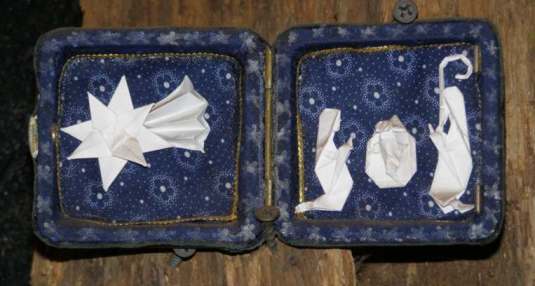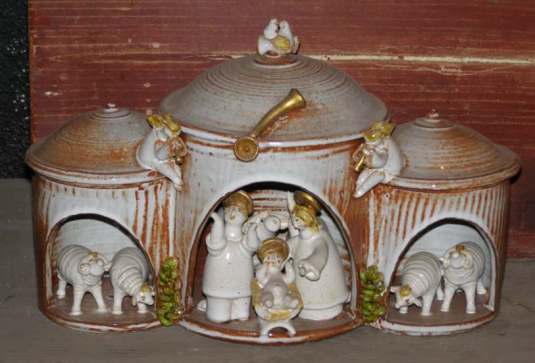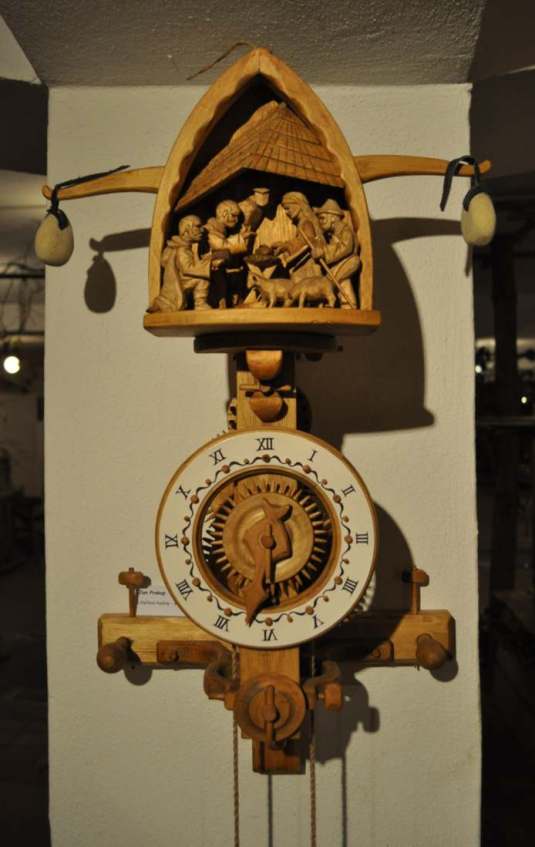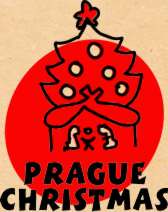
“Human size” nativity scene at Prague Castle bellow the Tower of St. Vitus Cathedral (entrance to the tower at the background)
As Christmas are getting closer, I want to write about one beautiful tradition in Bohemia, connected to them. It’s called Creches or Betlehem or Crib, in Czech it is Betlem. During Advent time we display nativity scenes in our homes, shops, but also on the streets. They can be made from any possible material and most of them are really beautiful. At some places you can also find living nativity scene with real people and real animals.
Standard composition of Creches consists of: new born baby Jesus at the creche with cow and donkey, Joseph and Mary standing by, Angel above with the sign: Gloria in excelsis Deo.
We can’t forget about shepherds and sheeps welcoming our Saviour and as the Christmas are getting closer and the holiday of Three Kings is behind the door, three kings are put closer and closer to the creche. During the time we add more and more figures with gifts, children playing in the snow, small animals around.
In the crypt of Betlehem chappel in Prague there is always an exhibition of creches during Advent time, which worth visiting. For us it is already a part of our family tradition, to visit exhibition, take a short walk through the Old Town and then stop by for drink at Choco Cafe or Tearoom by the Golden Cock.
The tradition of Betlem displaying was founded in 1223 at the court of Italian noble Giovanni di Velita, when he invited Francisco of Assisi to spend Christmas with his family. Francisco wanted to visualise new born baby Jesus in his creches and therefore he prepared the installation for others.
He changed the cave on the rocky hill to small chappel with nativity scene and invited people from neigborhoud villages for visit it at Christmas Eve. At the midnight the bells rang and the hill glittered with lights how coming people brought their torches for the Christmas Mass.
At the end of the 18th century during the rule of Joseph II a lot of monasteries and churches were closed. Therefore, craftsmen as painters, woodcarvers snd goldplaters lost their work connected with church decoration.
On the other hand, the nativity scenes displayed in the churches had to go out.
Craftsmen started to make family creches for people and that´s how the creches spread around. Don’t you have one Betlem at home yet? Come to Prague and choose one, you can get one or get the inspiration for a home made one.
Betlémy – nativity scenes
Christmas Market in Prague Old Town
Christmas Crafts Markets in Prague
Czech Christmas Ornaments (Rautis)
Traditional Gingerbreads
Christmas Wish 2012
Family Tradition – Fire-crackers



























































